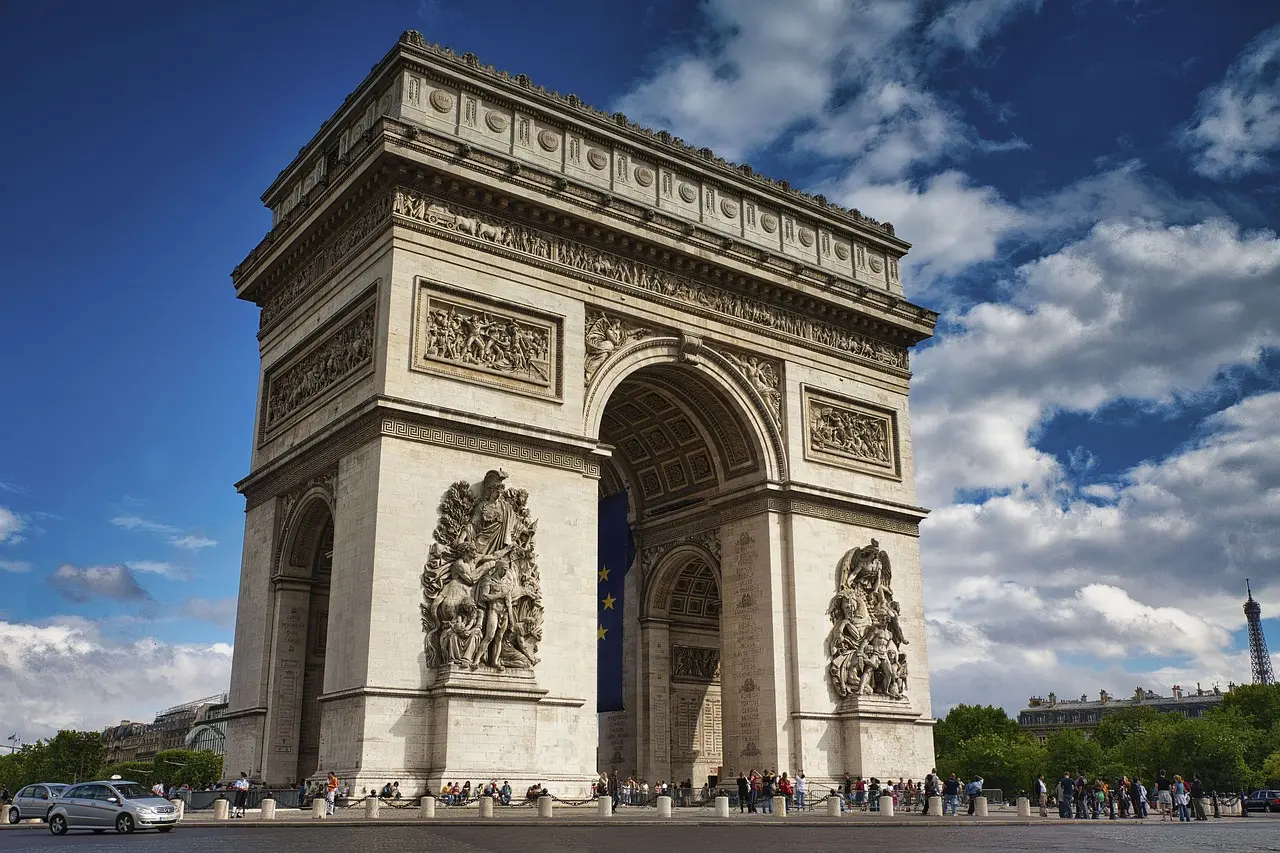Image by ian kelsall from Pixabay
The Arc de Triomphe, a majestic triumphal arch standing at the western end of the Champs-Élysées in Paris, boasts a rich history interwoven with the rise and fall of empires and the changing fortunes of France.
The Napoleonic Era: A Monument to Glory
The Arc de Triomphe’s story begins with Napoleon Bonaparte, the ambitious emperor who sought to immortalize his military victories and solidify his place in French history. In 1806, at the height of his power, Napoleon commissioned the construction of the arch, intending it to be a monument to the Grande Armée, the soldiers who had fought for France in his wars.
The initial construction was marked by a mix of ambition and tragedy. Jean Chalgrin, the architect chosen for the project, designed a grand structure inspired by the Arch of Titus in Rome. However, the construction was halted several times due to political instability and funding shortages. In 1810, Napoleon, keen on a symbolic entrance to Paris for his marriage to Marie-Louise of Austria, had a full-scale wooden model of the arch built on the foundations.
The Bourbon Restoration and Continued Construction
Napoleon’s fall from power in 1815 brought the construction to a standstill. The Bourbon Restoration, with Louis XVIII on the throne, saw a shift in priorities. The arch, a symbol of Napoleonic glory, was deemed inappropriate. While initially considering demolition, the new regime eventually decided to resume construction, albeit with a different dedication. Louis XVIII chose to honor the Army of the Pyrenees, which had reinstated the King of Spain.
The construction continued under the rule of Charles X, with Chalgrin’s original plans largely followed. The arch was slowly raised, with ornaments and sculptures added, including a marble plaque dedicated to the Army of the Pyrenees.
Completion Under Louis-Philippe and a Shift in Dedication
The July Revolution of 1830 led to the rise of Louis-Philippe I, who decided to complete the arch with a new dedication: the Armies of the Revolution and the Empire. This symbolized a reconciliation with the Napoleonic era and a recognition of the sacrifices made during both the French Revolution and the Napoleonic Wars.
Finally, in 1836, after 30 years of construction, the Arc de Triomphe was inaugurated. Its grand ceremony served as a symbol of national unity and a reminder of France’s military past.
The Arc de Triomphe Today: A Symbol of Memory and Sacrifice
Today, the Arc de Triomphe remains a powerful symbol of French history and national pride. Its iconic form, etched with the names of French victories and generals, serves as a reminder of the sacrifices made for France. The Tomb of the Unknown Soldier, situated beneath its vault, honors those who died in World War I, further solidifying its association with remembrance and sacrifice.
The Arc de Triomphe, more than a mere monument, is a living testament to the dynamism of French history, reflecting its triumphs, its struggles, and its enduring spirit.
References
- Arc de Triomphe – Wikipedia
- Arc de Triomphe de l’Etoile – Paris – napoleon.org
- The Arc de Triomphe: History, Facts and Interesting Info
- Arc de Triomphe – Come to Paris
Explore More
- What were the main challenges faced during the construction of the Arc de Triomphe?
- How did the changing political climate in France affect the construction and symbolism of the arch?
- How has the Arc de Triomphe been used as a symbol in different historical periods?
- What are some of the most notable events that have taken place at or near the Arc de Triomphe?
